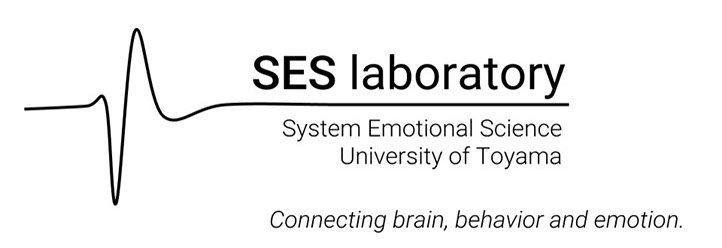Ongoing research projects
Neuronal mechanisms of sensorimotor integration in the emotion-related areas of the brain
In emotion-related areas distributed from the prefrontal cortex to the brainstem of rodents performing emotion-related behavioral tasks, we record and analyze the activity of neurons related to motor control and sensory processing and manipulate the neuronal activity using optogenetics and chemogenetics.
Recent publications:
1. Sachuriga, Nishimaru H, Takamura Y, Matsumoto J, Ferreira Pereira de Araújo M, Ono T, Nishijo H.. Neuronal Representation of Locomotion During Motivated Behavior in the Mouse Anterior Cingulate Cortex. Front Syst Neurosci. 2021 15:655110. doi: 10.3389/fnsys.2021.655110
2. Nishimaru H, Matsumoto J, Setogawa T, Nishijo H. Neuronal structures controlling locomotor behavior during active and inactive motor states. Neurosci Res. 189:83-93, 2023. doi: 10.1016/j.neures.2022.12.011.
Top-down control of pain information processing and pain-related emotional disorders
It is well known that pain information from the periphery enters to the central nervous system via the spinal cord. Such pain-related activity of spinal neurons is controlled by the higher centers including the emotion-related regions in the cerebral cortex. Our research group has been studying the neural mechanisms of pain in the prefrontal cortex and other higher brain regions in humans and rodents. We are currently focused on recording the activity of pain-related neurons in these areas and manipulating their activity in mice models.
Recent publications:
Miyahara K, Nishimaru H, Matsumoto J, Setogawa T, Taguchi T, Ono T and Nishijo H (2021) Involvement of Parvalbumin-Positive Neurons in the Development of Hyperalgesia in a Mouse Model of Fibromyalgia. Front. Pain Res. 2:627860. doi: 10.3389/fpain.2021.627860
Unravelling the mechanism of auditory discrimination of self and others
In conversations, a person hears the own voices in addition to others’ voices. The ability to discriminate the voices of others from those of oneself is fundamental for normal communication. It is suggested that, for the discrimination, the auditory system in the brain compares the auditory inputs with the efferent copy from the vocal motor system associated with the own vocalizations. The neuronal mechanism of integration of the auditory inputs with the motor efferent copy remains unknown. We aim to elucidate the neural process in rodent models.
Development of behavior measurement techniques in rodents and primates
Animal postures and movements not only represent motor functions but also reflect internal states such as emotions and intentions. Therefore, if animal behavior can be measured in detail, various information regarding brain function can be extracted. We are developing techniques to measure individual and group behavior of rodents and primates in a detail, in a nature-like environment and for long duration, using image recognition and sound localization techniques based on deep learning.
Recent publications:
1. Matsumoto J, Kanno K, Kato M, Nishimaru H, Setogawa T, Chinzorig C, Shibata T, Nishijo H. Acoustic camera system for measuring ultrasound communication in mice.iScience 25:104812. doi: 10.1016/j.isci.2022.104812.
2. Labuguen R, Matsumoto J, Negrete SB, Nishimaru H, Nishijo H, Takada M, Go Y, Inoue KI, Shibata T. MacaquePose: A Novel "In the Wild" Macaque Monkey Pose Dataset for Markerless Motion Capture. Front Behav Neurosci 4:581154. 2020, doi: 10.3389/fnbeh.2020.581154.
Brain mechanisms of reward-based decision-making
We have been conducting research to elucidate the mechanisms in the brain during choice making. In particular, we have focused on the orbitofrontal cortex, and have shown through electrophysiological and pharmacological experiments using monkeys that neuronal activity in this region not only encodes the value of alternatives, but also compares the value of each alternative. Currently, we are mainly using chemogenetic manipulations to elucidate the neural networks involved in reward-based decision-making.
Recent publications:
1. Setogawa T, Mizuhiki T, Matsumoto N, Akizawa F, Kuboki R, Richmond BJ, Shidara M. Neurons in the monkey orbitofrontal cortex mediate reward value computation and decision-making. Communications Biology, 2:126, 2019, doi:10.1038/s42003-019-0363-0
2. Setogawa T, Eldridge MAG, Fomani GP, Saunders RC, Richmond BJ. Contributions of the Monkey Inferior Temporal Areas TE and TEO to Visual Categorization.Cereb Cortex. 31:4891-4900, 2021. doi: 10.1093/cercor/bhab129.
Last updated April 2023


